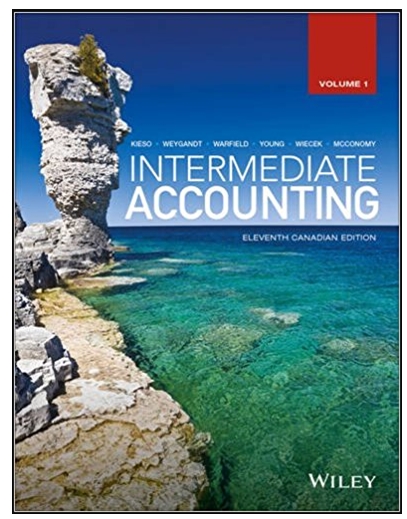Consider the following independent situations. Situation 1: Ducharme Corporation purchased electrical equipment at a cost of $12,400
Question:
Situation 1: Ducharme Corporation purchased electrical equipment at a cost of $12,400 on June 2, 2014. From 2014 through 2017, the equipment was depreciated on a straight-line basis, under the assumption that it would have a 10-year useful life and a $2,400 residual value. After more experience and before recording 2018's depreciation, Ducharme revised its estimate of the machine's useful life downward from a total of 10 years to 8 years, and revised the estimated residual value to $2,000.
On April 29, 2019, after recording part of a year's depreciation for 2019, the company traded in the equipment on a newer model, and received a $4,000 trade-in allowance, even though the equipment's fair value was only $2,800. The new asset had a list price of $15,300 and the supplier accepted $11,300 cash for the balance. The new equipment was depreciated on a straight-line basis, assuming a seven-year useful life and a $1,300 residual value.
Situation 2: Malcolm Limited acquired a truck to deliver and install its specialized products at the customer's site. The vehicle's list price was $45,000, but customization added another $10,000 in costs. Malcolm took delivery of the truck on September 30, 2017, with a down payment of $5,000, signing a four-year, 8% note for the remainder, payable in equal payments of $14,496 beginning September 30, 2018.
Malcolm expected the truck to be usable for 500 deliveries and installations. After that, the product's technology would have changed and made the vehicle obsolete. In late July 2020, the truck was destroyed when a concrete garage collapsed. Malcolm used the truck for 45 deliveries in 2017, 125 in 2018, 134 in 2019, and 79 in 2020. The company received a cheque for $12,000 from the insurance company and paid what remained on the note.
Situation 3: A group of new machines was purchased on February 17, 2018, under a royalty agreement with the following terms: The purchaser, Keller Corp., is to pay a royalty of $1 to the machinery supplier for each unit of product that is produced by the machines each year. The machines are expected to produce 200,000 units over their useful lives. The machines' invoice price was $75,000, freight costs were $2,000, unloading charges were $1,500, and royalty payments for 2018 were $13,000. Keller uses the unit of production method to depreciate its machinery.
Situation 4: On March 31, 2014, Wayside Corporation purchased a new piece of manufacturing equipment for a cost of $323,000. At that time, the estimated useful life of the equipment was five years, with a residual value of $65,000. On August 1, 2017, due to increased competition causing a decreased selling price for its product, Wayside decided to discontinue manufacturing the product. By December 31, 2017, there was a formal plan in place to sell the equipment, and the equipment qualified for classification as held for sale. At December 31, 2017, the equipment's fair value less costs to sell was $52,000. Due to matters beyond Wayside's control, a potential sale of the equipment fell through in 2018, although consumer confidence in Wayside's product increased significantly because of reported defects in its competitors' products. The equipment remained classified as held for sale at December 31, 2018, when the equipment's fair value less costs to sell increased to $145,000. Wayside uses the straight-line method to depreciate its equipment.
Instructions
(a) For situation 1, determine the amount of depreciation expense reported by Ducharme for each fiscal year for the years ending December 31, 2014, to December 31, 2019.
(b) For situation 2, prepare all entries that are needed to record the events and activities related to the truck, including the depreciation expense on the truck each year. Assume that Malcolm uses an activity approach to depreciate the truck, and bases it on deliveries.
(c) For situation 3, prepare journal entries to record the purchase of the new machines, the related depreciation for 2018, and the royalty payment.
(d) For situation 4, prepare all journal entries required for the years ending December 31, 2017, and December 31, 2018.
(e) You are an employee of Wayside Corporation receiving a bonus based on income from continuing operations. If a loss results from the equipment classified as held for sale, how will you be affected under IFRS?
Corporation
A Corporation is a legal form of business that is separate from its owner. In other words, a corporation is a business or organization formed by a group of people, and its right and liabilities separate from those of the individuals involved. It may...
Fantastic news! We've Found the answer you've been seeking!
Step by Step Answer:
Related Book For 

Intermediate Accounting
ISBN: 978-1119048534
11th Canadian edition Volume 1
Authors: Donald E. Kieso, Jerry J. Weygandt, Terry D. Warfield, Nicola M. Young, Irene M. Wiecek, Bruce J. McConomy
Question Posted:





